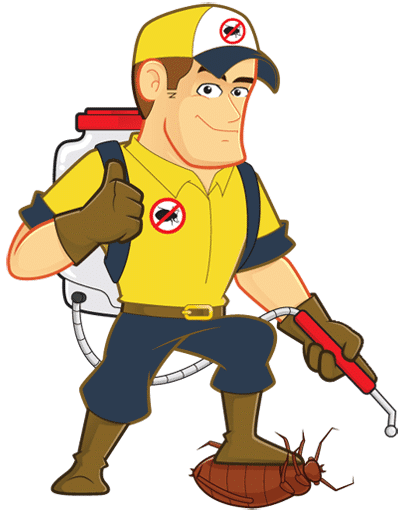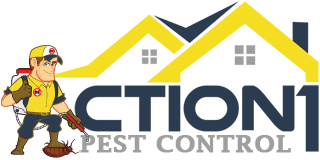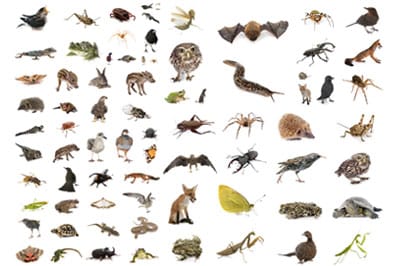Ant Control and Extermination
Call Us Today- Home
- »
- Pest Control
- »
- Ant Exterminator
The most effective ant control combines immediate elimination methods with long-term prevention strategies, addressing both visible ants and their hidden colonies. Understanding which species you’re dealing with and their specific behaviors allows us to select targeted treatments that work efficiently rather than relying on generic solutions that may fail.
We’ll guide you through identifying the signs of ant problems, recognizing different species and their habits, and how to hire one of the Action 1 Pest Control local teams to help you with ant extermination.
Highly Trusted Ant Extermination Company

High Quality Services

Affordable & Upfront Pricing

Emergency Same Day Service
Identifying Ant Problems
Recognizing Infestation Signs
Ant trails are most commonly found in kitchens, pantries, and dining areas where food particles attract them. We should pay special attention to areas around sinks, countertops, and pet food bowls.
Small mounds of dirt or debris near our home’s foundation signal outdoor ant colonies. Inside, we might notice tiny piles of sawdust-like material, which could indicate carpenter ants damaging wooden structures.
Food contamination is another clear sign of ant infestation. We may find ants inside sealed containers or notice them swarming around spilled liquids and crumbs.
Common Entry Points and Ant Trails
We should inspect areas where different building materials meet, as these joints often develop small gaps over time. Weatherstripping around doors and windows deteriorates and creates entry opportunities.
Ant trails follow specific patterns based on chemical signals called pheromones. These invisible pathways connect food sources to nest locations and can persist even after we remove the ants.
Common trail locations include:
- Along baseboards and wall edges
- Under carpets and rugs
- Behind appliances
- Around plumbing fixtures
Distinguishing Between Ants and Termites
Ants have three distinct body segments with a narrow waist between the thorax and abdomen. Termites have straight-sided bodies without the pronounced waist constriction.
Antennae shape differs significantly between species. Ants possess elbowed antennae with a distinct bend, while termites have straight, bead-like antennae.
Wing characteristics also vary when we encounter flying insects. Ant wings are unequal in size with the front wings larger than the back wings. Termite wings are equal in length and extend well beyond their body.
Our 5 Step Pest and Ant Control Process

Understanding Ant Species and Behavior
Carpenter Ants
Unlike termites, carpenter ants don’t eat wood. They excavate tunnels and galleries in moist or damaged wood to create nesting sites. This behavior causes significant structural damage over time.
Common nesting locations include:
- Window frames and door jambs
- Roof eaves and attic spaces
- Basement floor joists
- Dead tree branches near homes
Carpenter ants establish satellite colonies indoors while maintaining their main colony outdoors. Worker ants travel between these locations, creating visible trails along baseboards and walls.
We often find wood shavings and debris near their nesting sites. These ants are most active at night when they forage for protein and sugar sources.
Odorous House Ants
Key behavioral characteristics:
- Follow distinct pheromone trails to food sources
- Prefer sweet foods and honeydew from aphids
- Move colonies frequently when disturbed
- Nest in wall voids, under floors, and around water sources
Odorous house ants enter homes through tiny cracks around windows and foundations. They’re attracted to moisture and often appear in kitchens and bathrooms first. Their trail-following behavior means eliminating one worker leads others directly to food sources. Breaking these pheromone trails is essential for effective control.
Fire Ants
Fire ant colonies exhibit:
- Rapid reproduction rates
- Territorial behavior against other ant species
- Ability to relocate entire colonies quickly
- Omnivorous feeding habits
We find fire ants particularly problematic because they damage electrical equipment and irrigation systems. Their stings pose serious medical risks for allergic individuals. These ants thrive in warm, sunny locations with accessible moisture sources.
Pavement Ants
Typical nesting and foraging patterns:
- Nest depths extend 3 feet underground
- Forage up to 30 feet from nest entrances
- Prefer greasy foods and dead insects
- Remain active year-round in heated buildings
Indoor infestations occur when pavement ants follow foundation walls into basements and ground-floor rooms. They exploit tiny cracks in mortar and concrete. These ants communicate through pheromone trails and respond aggressively to threats near their nests.
Effective Ant Control Methods
Ant Baits and Traps
Worker ants carry the poisoned bait back to their colony, sharing it with other ants and the queen. This process typically takes 7-14 days to achieve complete colony elimination.
Professional-grade ant baits contain ingredients like borax, hydramethylnon, or fipronil. These active ingredients allow sufficient time for distribution throughout the colony before taking effect.
Ant traps function similarly but contain the bait within enclosed stations. This design prevents accidental exposure to pets and children while maintaining effectiveness.
| Bait Type | Best For | Timeline |
|---|---|---|
| Gel baits | Indoor cracks and crevices | 7-10 days |
| Granular baits | Outdoor perimeters | 10-14 days |
| Liquid baits | Sweet-feeding ants | 5-7 days |
We recommend placing multiple bait stations along ant trails and near entry points. Avoid cleaning ant trails initially, as this removes the pheromone paths that guide ants to the bait.
Targeted Ant Sprays
Residual ant sprays create protective barriers that continue killing ants for weeks after application. These formulations work best when applied to entry points, baseboards, and outdoor perimeters.
Professional ant control treatments often combine multiple spray types. Our technicians apply residual sprays to create treatment zones while using contact sprays for immediate ant elimination.
Targeted application focuses on:
- Cracks and crevices where ants enter
- Along baseboards and window sills
- Outdoor ant trails and nesting sites
- Around doors and foundation perimeters
Indoor sprays should be applied sparingly to avoid contaminating food preparation areas. Outdoor applications provide better long-term control by treating ants before they enter structures. We recommend using sprays as part of integrated control programs rather than standalone solutions. This approach addresses both immediate ant activity and long-term prevention.
Ant Prevention and Long-Term Solutions
Sealing Entry Points
Common entry points include:
- Window and door frames
- Foundation cracks
- Utility line penetrations
- Gaps around pipes and cables
Use high-quality caulk to seal cracks in walls, baseboards, and around windows. Apply weatherstripping to doors and windows where gaps exist. Focus particularly on areas near kitchens and bathrooms where moisture attracts ant colonies.
For larger foundation cracks, we recommend concrete crack filler or hydraulic cement. These materials create permanent barriers that prevent both moisture intrusion and ant access. Professional pest control services often use specialized sealants that remain flexible and maintain their integrity over time. Regular maintenance checks help identify new entry points before they become pathways for ant hills to establish nearby colonies.
Proper Food Storage
Store all pantry items in sealed containers made of glass, metal, or heavy plastic. Cardboard packaging offers no protection against determined ant colonies. Transfer cereals, flour, sugar, and pet food immediately after opening.
Clean up spills and crumbs within minutes of occurrence. Ants leave chemical trails that guide other colony members to food sources. We must eliminate these trails through immediate cleaning with soap and water.
Critical storage areas:
| Location | Action Required |
|---|---|
| Pantry shelves | Wipe weekly with vinegar solution |
| Pet food areas | Store in airtight containers |
| Garbage cans | Use tight-fitting lids, empty regularly |
| Countertops | Clean daily with disinfectant |
Our ant exterminators often find that poor food storage practices are the primary factor enabling infestations to persist despite treatment efforts.
Moisture and Environment Management
Fix leaking pipes, faucets, and appliances immediately. Check under sinks, around water heaters, and near dishwashers for hidden leaks that create ideal conditions for ant nests.
Improve ventilation in humid areas like basements, crawl spaces, and bathrooms. Use dehumidifiers to maintain humidity levels below 50 percent. Remove standing water from plant saucers, pet bowls, and outdoor containers.
Trim vegetation away from building foundations to eliminate moisture retention and ant hill development. Maintain a 12-inch clearance between plants and exterior walls. Remove mulch that retains excessive moisture near the foundation.
Address drainage issues that create wet soil conditions adjacent to buildings. These areas become prime locations for outdoor ant colonies that eventually move indoors seeking additional resources.

Why Hire Our Team
Our professional pest control technicians bring specialized expertise that makes ant elimination more effective than DIY approaches. We can identify specific ant species and select targeted treatments accordingly.
Safety represents a major advantage of professional services. Many ant control chemicals available to consumers can be hazardous to people and pets. Our licensed technicians know how to handle these substances safely and apply proper safety protocols.
Speed and efficiency sets our professionals apart from amateur efforts. Our experts have access to commercial-grade treatments and can eliminate entire colonies faster than store-bought products. This prevents the problem from spreading further throughout your property.
Our professional ant exterminators use integrated approaches that combine multiple methods. We employ baiting systems, targeted spraying, exclusion techniques, and trapping simultaneously for maximum effectiveness.
The cost-effectiveness of our professional services often surprises homeowners. While initial costs may seem higher, our experts eliminate infestations completely on the first attempt. This prevents repeated purchases of ineffective products and saves time spent on failed treatments.





